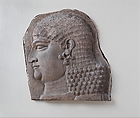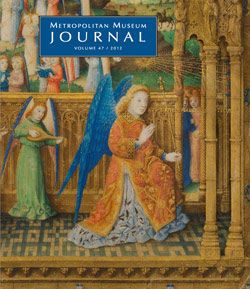Head of a beardless royal attendant, possibly a eunuch
Not on view
Soon after taking the throne, the Assyrian king Sargon II (r. 721–705 B.C.) founded a new capital city, Dur-Sharrukin (literally "fortress of Sargon"), at a site known today as Khorsabad. Sargon took the throne in a coup against his brother, Shalmaneser V (r. 726–722 B.C.), and it is possible that by moving to a new capital he hoped to consolidate his regime. The name Sargon, meaning "true king," was a throne name, and referred to a very ancient king, Sargon of Akkad, who by the Neo-Assyrian period was remembered as a legendary hero. Building work at Dur-Sharrukin continued throughout Sargon’s reign, with not only a main palace but a constellation of palaces and temples as well as the city itself under construction. However, the immense project was abandoned in 705 B.C. with the king’s death. His son Sennacherib would move the capital once again, to Nineveh, and there embark on a new monumental building program.
This relief fragment comes from the main palace at Khorsabad and shows the head of a beardless male figure, probably a eunuch. Eunuchs played a major role in the Assyrian court and palace administration, and are frequently depicted in the reliefs that decorated the palace. This head is thought to come from a larger scene showing a group of beardless courtiers carrying vessels and furniture for a banquet or celebration. Although they are depicted serving the king, the figures are richly dressed, indicating their high status within the Assyrian court. The head in this fragment wears the elaborate hairstyle typical for an Assyrian courtier, as well as a large earring with three projecting studs, one of several styles seen in the reliefs. Comparable earrings have been discovered in the tombs of royal women at Nimrud, where they are made of gold and set with colorful stones such as banded agate.
Reliefs from Khorsabad are notable for their sometimes extremely large scale and their frequent use of high relief. Here the relief projects further from the background surface and takes on a more rounded, modeled form than is typical in the reliefs of Sargon’s predecessors or successors.
Due to rights restrictions, this image cannot be enlarged, viewed at full screen, or downloaded.


